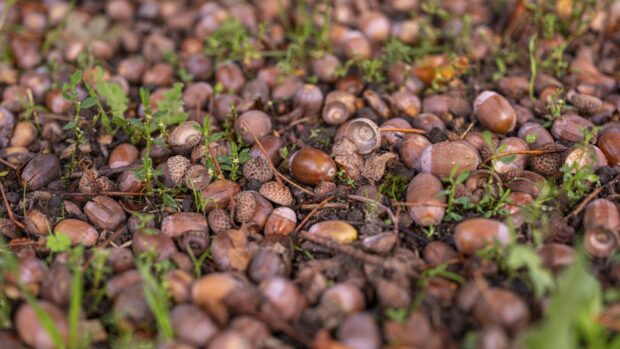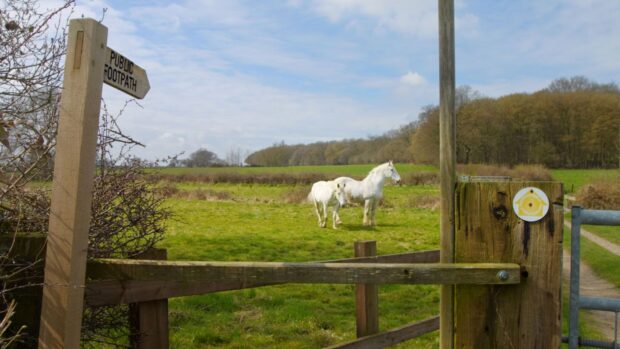In the winter when it’s wet, soggy and horrible, consider sacrificing a small portion of your field as a turnout area to protect the rest of your grazing.
Give the horses ad lib hay to prevent boredom and any squabbles. If we have really heavy rain, and your land gets very boggy, you may have to turn out horses in pairs or alone for short periods of time.
Alternatively, can you use an outdoor school as a turnout area? No one likes to see horses staying in for long periods, but if they are going to be standing up to their hocks in mud, plenty of daily exercise and short spells in a ‘playpen’ might be the only way to survive.
Split fields into smaller areas which can be alternately grazed and then rested. This can be done cheaply and effectively with temporary electric fencing. It’s worth doing this even with small fields – the grazing lasts longer andyou spend less time playing ‘hunt the piles’.
Re-seed bare patches of ground in spring and autumn. Grass seed can be spread over isolated patches by hand and then raked over. If, however, the field is quite bare all over, you may needto think of getting a farmer or contractor to drill seed into the existing grass.
All-purpose packs of seed for horse pasture may be easier and more economical for small areas, but when possible – and certainly when seeding large paddocks – it’s a good idea to get a seed mix made especially for your land requirements. ADAS or a specialist contractor will advise you.
Wage war against weeds. Again, get some specialist advice on which products to use. Small areas can be treated with a backpack sprayer, but these are too heavy to lug around large fields. With a bit of ingenuity, it’s possible to mount a backpack sprayer on a ride-on lawnmower tractor.
Walk around your field daily to check fencing, find and fill in rabbit burrows and molehills and pull out and destroy any poisonous plants, such as ragwort and nightshades. Watch out for anyone throwing grass clippings or garden rubbish over the fence into your field as eating these could lead to potentially fatal colic or poisoning.
Get specialist advice on when and with what to fertilise – if you get it wrong you’ll only waste your money. Ask a horse specialist, as you don’t want sudden rich flushes of grass and the risk of laminitis.
Allowing cattle and sheep to graze your land can improve your pasture and lower the worm burden. Cattle like the longer grass horses reject, but can add to poaching in wet weather. Sheep are good for ‘patting down’ softer land without causing damage. Ideally, graze with cattle in summer and sheep in winter.
If you dream of keeping your horse at home, never under-estimate the time and money which needs to be spent on establishing and maintaining pasture. It really is a constant battle, but it is achievable with some careful planning, some expert advice and a great deal of commitment to making it work.



